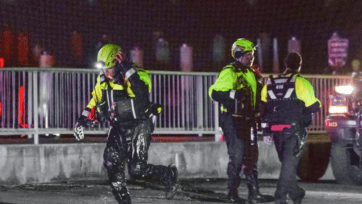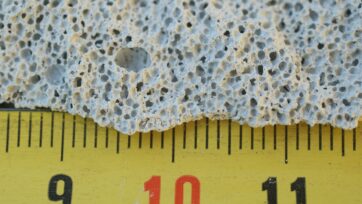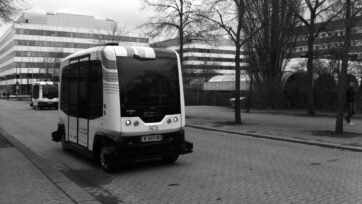(Image credit: Pixabay)
Researchers at the US Massachusetts Institute of Technology (MIT) have developed a remarkable insect-sized robot capable of traversing complex terrains, executing jumps, carrying heavy loads relative to its size, and even performing aerial stunts. This innovative creation marks a significant step forward in robotics, opening potential applications in fields ranging from search and rescue to environmental monitoring.
The robot, named SPROUT (short for Stretchable Pumping Robotic Unit for Jumping and Traversal), is built with a lightweight, flexible structure. SPROUT is driven by a pioneering actuation system based on a dielectric elastomer actuator (DEA) combined with a hydraulically amplified self-healing electrostatic (HASEL) component. This combination enables powerful bursts of motion, propelling the tiny machine high into the air or across obstacles far larger than itself.
One of the defining achievements of SPROUT is its ability to adjust its trajectory mid-jump. By rapidly shifting its internal fluid mass during flight, the robot can change orientation to ensure stable landings or even perform controlled flips and rolls. The robot demonstrated an ability to carry payloads many times its own body weight while maintaining stability and maneuverability.
The robot’s design addresses one of the biggest challenges in creating micro-robots: finding actuators that are both strong and lightweight enough for dynamic movement. Unlike traditional electric motors, the soft and flexible actuators used in SPROUT allow it to perform dynamic maneuvers that previously were only possible in much larger machines.
Researchers envision that future versions of SPROUT could be deployed for critical missions. In search and rescue operations, for example, swarms of these robots could navigate through rubble to locate survivors. Their resilience and ability to cross difficult terrain make them ideally suited for environments that are dangerous or inaccessible to human rescuers. Additionally, the technology could be scaled for broader environmental or industrial uses where navigating tight spaces is required.
The project’s lead engineers highlighted that the integration of soft materials with advanced control systems is opening up new possibilities for robot design. The combination of agility, robustness, and miniaturization demonstrated by SPROUT could reshape expectations of what small autonomous machines can achieve.
A Systems Engineering Perspective
- The SPROUT robot exemplifies the critical role systems engineering plays in the successful development of complex, integrated solutions. SPROUT’s breakthrough performance required the careful coordination of multiple disciplines—materials science, mechanical engineering, control systems, and robotics— to work in harmony in an optimized configuration.
- From a systems engineering viewpoint, SPROUT highlights the value of:
- Transdisciplinary Integration: Combining flexible materials, actuator innovation, and real-time control to meet end-use objectives
- Requirements-Driven Design: Engineering for stability, agility, and payload capacity within extreme size and weight constraints
- Lifecycle Thinking: Considering durability, reusability, and adaptability from the early design stages to maximize operational effectiveness
- Verification and validation: Rigorous testing and trialling of performance, including terrain traversal and aerial stunts, ensures that system behavior aligns with design intent under real-world conditions.
References
Loughran, Jack 2025, ‘MIT develops insect-like robot for rough terrain navigation’, Silicon Republic, viewed 11th April 2025, https://www.siliconrepublic.com/innovation/mit-hopping-robot-insect-navigation-machine
Wang, Wei-Hsi Chen et al. 2025, ‘An electrically driven, hydraulically amplified, insect-scale jumping robot’, Science Advances, viewed 11th April 2025, https://www.science.org/doi/10.1126/sciadv.adu4474
Tech Xplore, 2025, ‘Insect-sized robot can jump and traverse rough terrain’, Tech Xplore, viewed viewed 11th April 2025, https://techxplore.com/news/2025-04-insect-sized-robot-traverse-terrains.html
Malewar, Amit 2025, ‘An insect-sized jumping robot navigates rough terrains and carries heavy payloads’, Tech Explorist, viewed 11th April 2025, https://www.techexplorist.com/insect-sized-jumping-robot-navigates-rough-terrains-carries-heavy-payloads/98895/
ScienceDaily, 2025, ‘Tiny, soft robot flexes its potential as a life saver’, ScienceDaily, viewed 11th April 2025, https://www.sciencedaily.com/releases/2025/04/250408121334.htm
Wahl, Haley 2025, ‘A flexible robot can help emergency responders search through rubble’, Massachusetts Institute of Technology, viewed 11th April 2025, https://news.mit.edu/2025/sprout-flexible-robot-help-emergency-responders-search-rubble-0402
Mrigakshi Dixit, 2025, ‘Bug-sized daredevil robot nails aerial stunts, beating flying bots in energy use’, Interesting Engineering, viewed 11th April 2025, https://interestingengineering.com/innovation/mit-bug-sized-daredevil-robot-nails-aerial-stunts?group=test_b

























